
Ghai Essential Pediatrics8th
.pdf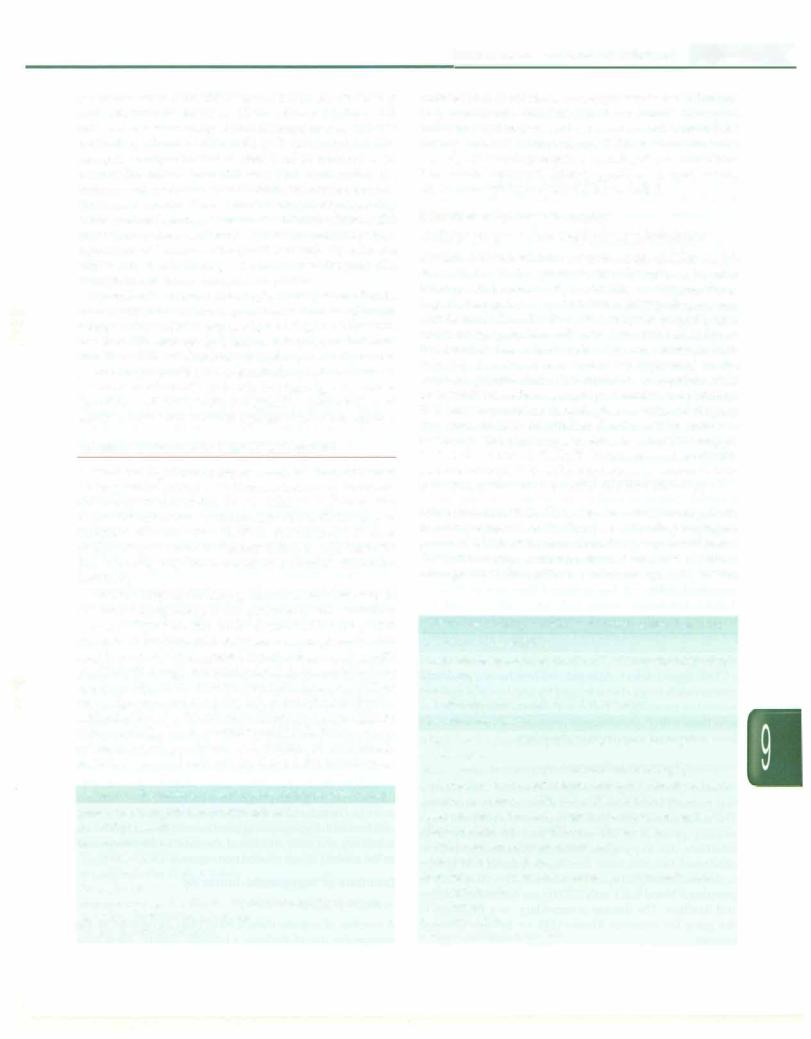
peripheralbloodis2:1; this is alteredinimmunodeficiency and autoimmune diseases. C04+ cells or T helper (Th) cells can recognize antigen only if bound to class II MHC molecules, whereas COB+ cells or T cytotoxic (Tc) cells recognize antigen bound to class I MHC molecules. Th cells differentiate into Thl and Th2 cells under the influence of cytokines. Thl immune response supports inflammationand activates Tccells andmacrophages(e.g. intuberculoidleprosy, rheumatoid arthritis) whereas Th2 responses induce antibody mediated immunity (e.g. lepromatous leprosy, allergic disorders). Tc cells are important in eliminating intracellular pathogens like viruses, and in organ transplant rejection.
About 5-15% of the circulating lymphocytes are B cells, characterized by surface expression of immunoglobulin isotypes. The majority express IgM and IgO isotypes and less than 10% express IgG, IgA or IgE isotypes. NK cells constitute 15% of circulating lymphocytes and are also present in lymphoid tissues, particularly spleen. They do not carry markers of T or B cells but have IgG Fe surface receptors. NK cells show nonspecific cytotoxicity and enable immune surveillance against viruses and tumors.
PRIMARY IMMUNODEFICIENCY DISORDERS
A small but significant proportion of children evaluated for frequent infections have immunodeficiency.Immuno deficiency disorders can be secondary or primary, the formerbeing far more common.Infection with the human immunodeficiency virus (HIV) is the commonest cause of secondary immunodeficiency (Chapter 10). Table 9.1 lists clinically important causes of secondary immuno deficiency.
Primary immunodeficiency disorders can affect any of the major components of the immune system, including T and/orB lymphocytes, antibodyproduction, phagocyte number or function and complement components. The conditionshouldbesuspectedin patients presenting with
.:2'..2 of thefollowingtenwarning signs:(i) .:2'..4 newinfections in a year;(ii) .:2'..2 serious sinus infections in a year;(iii) .:2'..2 cases of pneumoniain a year;(iv) .:2'..2month of antibiotics without effect;(v) failure of an infant to gain weight or grow normally;(vi) recurrent deep skin infections or organ abscesses; (vii) persistent oral thrush, or candidiasis elsewhere beyond infancy; (viii) need for intravenous
Table: 9.1 : Common secondary causes of immunodeficiency
Human immunodeficiency virus infection Following measles
Severe malnutrition Nephrotic syndrome Lymphoreticular malignancies Severe bums
lmmunosuppressive drugs (e.g. glucocorticoids, cyclophos phamide, azathioprine) phenytoin
Severe or chronic infections
Immunization and Immunodeficiency -
antibiotics to clearinfections;(ix).:2'..2 deep seatedinfections (e.g. meningitis, cellulitis); and (x) family history of immunodeficiency (based on recommendations of the Jeffrey Modell Foundation). Table 9.2 outlines the investigativeworkup requiredinsuchpatients.Conditions that mimic immunodeficiency (gastroesophageal reflux, Kartagener syndrome) should be excluded.
Disorders of Specific Immunity
Cellular and/or Combined Immunodeficiency Severe combined immunodeficiency (SCIO) Child
ren with the SCIO syndrome usually present in early infancy with severe infections due to viruses, fungi (e.g. Pneumocystisjiroveci)andintracellularpathogens(e.g. Mycobacteria). Tonsillar tissue isusually absent and lymph nodes are not palpable.Left untreated, such babies do not live for more than a few months. The most common form of SCIO is X-linked and caused by mutations in the common gamma chain (IL2 receptor y); approximately one-fourth cases have adenosine deaminase deficiency. SCIO due to purine nucleoside phosphorylase deficiency may present later in childhood with milder immuno deficiency. The phenotype in patients with SCIO may be T- B+ NK-(X-linked SCIO), T- B- NK-(adenosinedeami nase deficiency), T-B- NK+(mutations in recombination activating genes) or T- B+ NK+(IL7Radeficiency).
DiGeorge anomaly This disorder arises due to defects in embryogenesis of the third and fourth pharyngeal pouches. It is characterized clinically by an unusual facies (hypertelorism, antimongoloid slant, low set ears, micrognathia, short philtrum of upper lip, bifid uvula),
Table: 9.2: Investigations for suspected immunodeficiency Screening investigations
Total and differential leukocyte counts,leukocyte morphology HN serology
X-ray chest
Delayed skin tests (Candida, tetanus toxoid)
Specific investigations
Blood levels of irnmunoglobulins: IgG, IgA, IgM; IgG subclasses
Blood group isohemagglutinins (for functional IgM) Anti-diphtheria and anti-tetanus antibodies (functional IgG) Lymphocyte subsets: CD3, CD4, CD8, CD19, CD16 Mitogen stimulation tests (response to phytohemagglutinin) Nitroblue tetrazolium (NBT) dye reduction test
CHSO, complement component assays Mannan binding lectin assay
Enzyme assays: adenosine deaminase, purine nucleoside phosphorylase
HLA typing Bacterial killing
Cherniluminiscence studies
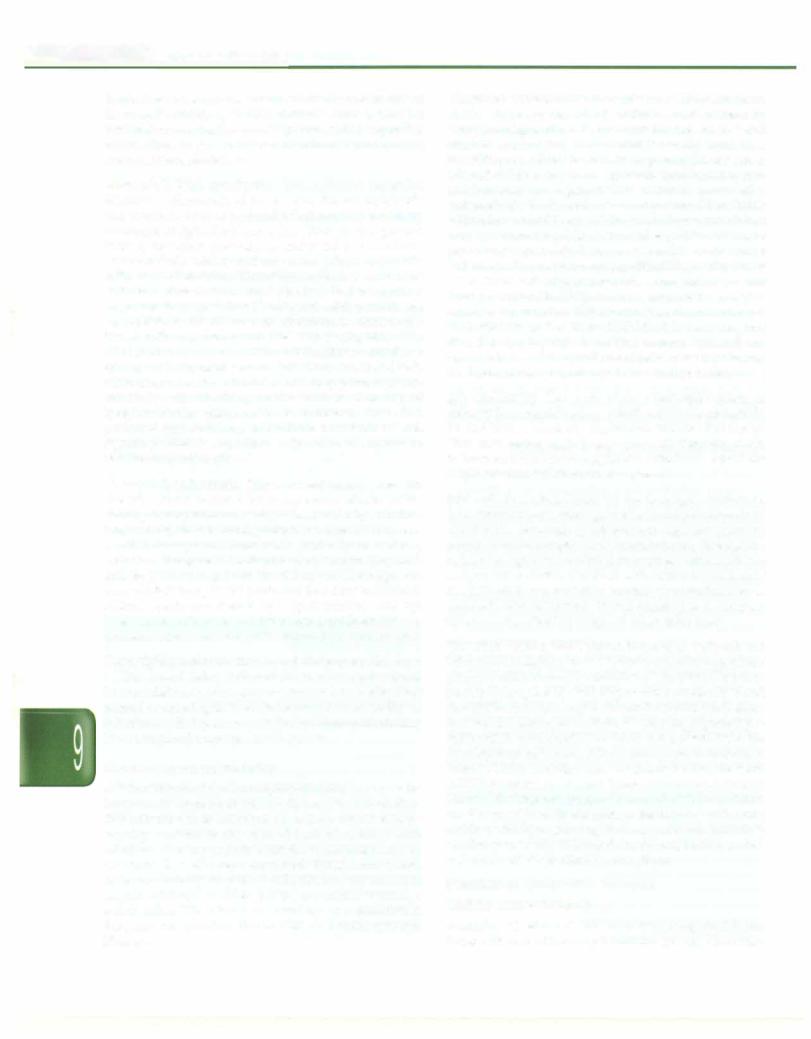
- Essential Pediatrics
hypocalcemic tetany, aortic arch anomalies and an absent thymus. In addition, 20-30% patients show a variable Tcelldefect,rangingfrom amildlyincreasedsusceptibility to infections to severe disease requiring hematopoietic stem cell transplantation.
Wiskott-Aldrich syndrome This X-linked recessive disorder is characterized by eczema, thrombocytopenia and recurrent serious bacterial infections. It is caused by mutations at Xpll.22-23, encoding WAS protein present in thecytoplasmoflymphocytesandplatelets. The eczema begins in early infancy and may mimic atopic dermatitis with atypical features. Thrombocytopenia is associated with characteristic small sized platelets. Due to impaired responses to polysaccharide antigens, such patients are susceptible to infections with Streptococcus pneumoniae, Haemophilus influenzae and Neisserin meningitidis. The clinical phenotype varies; some childrenhavea fulminant course with repeated severe infections causing death, while others survive childhood and may present predo minantly with bleeding manifestations. The risk of lymphoreticular malignancies is increased. There is a profound IgM deficiency in addition to defective T cell signaling which is secondary to the deficient expression of CD43 in lymphocytes.
Ataxia-telangiectasia This is an autosomal recessive disorder characterized by progressive ataxia (often starting during infancy), telangiectasia (initially on bulbar conjunctiva), sinopulmonaryinfections,excessivechromo somal breakage and increased sensitivity to ionizing radiation. The gene is localized to chromosome 1lq 22-23 and its product regulates the cell cycle. The degree of immunodeficiency is less profound thanseen in Wiskott Aldrich syndrome. Serum IgA, IgG2 subclass and IgE levels are usually reduced; lymphocyte proliferative res ponses are decreased and yo-T cell numbers are increased.
Hyper lgMsyndrome This T celldeficiency result isfrom a CD40 ligand defect. Affected children have a profound immunodeficiency characterized by low levels of IgG but normal or raised IgM. There is increased susceptibility to infections with P. pneumocystisjiroveci. Some patients may have associated autoimmune disorders.
Humoral Immunodeficiency
X-linked (Bruton) agammaglobulinemia This was the first primary immunodeficiency disorder to be described. The inheritance is X-linked recessive. Affected boys usually present in the second half of infancy with infections due to pyogenic bacteria. Presentation later in childhood has also been described. Tonsils and lymph nodes are usually atrophic. B cells (CD19+) are absent in peripheral blood but T cells (CD3+) are normal in number and function. The disease is secondary to a mutation in the gene for tyrosine kinase (Btk or Bruton tyrosine kinase).
Common variable immunodeficiency This termrefers to a heterogeneous group of conditions characterized by hypogammaglobulinemia and variable defects in T cell number and function. Presentation is usually much later in childhood and, unlike X-linked agarnmaglobulinemia, affected children may have significant lymphadenopathy and hepatosplenomegaly. Unlike X linked agammaglo bulinemia, theB cellnumber is usuallynormal. Low levels oflymphocyteprollierationfollowingmitogenstimulation may be demonstrated. Mutations in any of the following genes may cause this disorder: inducible costimulator (ICOS), SLAM associatedprotein (SH2DIA); CD19; CD20; CD81, B cell-activating factor of the tumor necrosis factor family receptor (BAFF-R), tumor necrosis factor receptor superfamily member 13B or transmembrane activator (TNFRSF13B or TACl) or TNFRSF13C. Autoimmune disorders (leukopenia, hemolytic anemia, arthritis) are commonly associated. Patients require close monitoring for development of lymphoreticular malignancies.
/gA deficiency This is one of the commonest causes of primary immunodeficiency. Affected individuals usually do not have a clinically significant immunodeficiency. They may remain entirely asymptomatic throughout We or have recurrent mild respiratory infections, especially if IgG subclass deficiency is also present.
/gG subclass deficiency Of the four IgG subclasses, IgGlprovidesprotectionagainstbacterialpathogens (e.g. diphtheria, tetanus), IgG2 protects against capsular polysaccharide antigens (e.g. pneumococcus, Haemophilus influenzae), IgG3 has antiviral properties while IgG4 has antiparasitic activity. Children with deficiency of one of the IgG subclasses may have normal, or sometimes even elevated, total IgG levels. This is ascribed to a compen satory overproduction of IgG of other subclasses.
Transient hypogammaglobulinemia of infancy All infantsgothrough a period ofphysiologicalhypogarnma globulinemiabetween3-6 months of age, when the trans placentallyacquiredmaternalIgG hasbeencatabolizedand thechild'sownimmunoglobulinproductionhasnotbegun. Insomeinfants,thisperiodofphysiologicalhypogammaglo bulinemia is prolonged to 18-24 months, resulting in the development of transient hypogammaglobulinemia of infancy. Unlike X-linked agammaglobulinemia, the B cell (CD19) numbers are normal. These children recover over timeandthelongtermprognosisisexcellent.Thecondition must be considered in the differential diagnosis of young childrenwithhypogammaglobulinemia. Serum IgG levels in infancy and early childhood should only be interpreted in the context of age related nomograms.
Disorders of Nonspecific Immunity
Cellular Immunodeficiency
A number of cellular defects have been recognized in the nonspecific arm of the body's immune system. These may
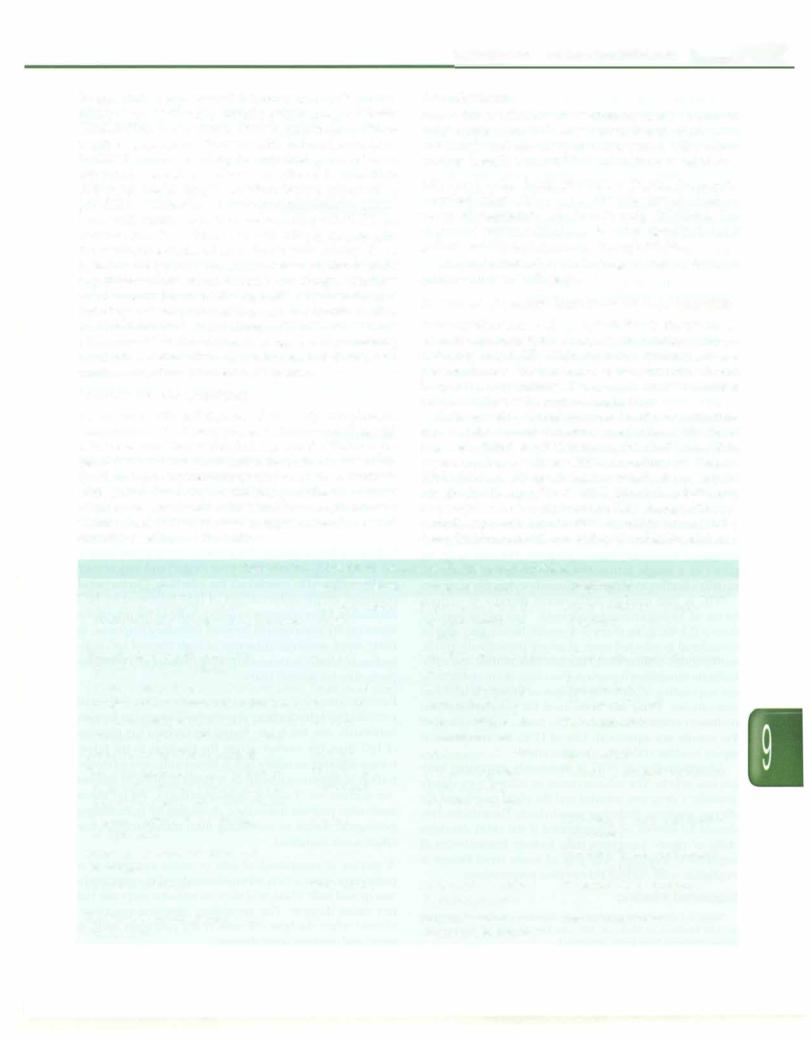
be quantitative (e.g. congenital neutropenia, cyclic neutro penia) or qualitative (e.g. chronic granulomatous disease, Chediak-Higashi syndrome). Chronic granulomatous disease refers to a group of disorders with reduced activity of NADPH oxidase leading to impaired generation of superoxide radical. The disease is X-linked in more than 50% patients secondary to mutations in the gene encoding gp9-PHOX, while others have autosomal recessive inheri tance with mutations in the gene encoding p47-PHOX on chromosome 7. Children present with recurrent life threateninginfections, often startingin earlyinfancy.These infections are typically causedby catalase-positive bacteria (e.g. Staphylococcus aureus, Serratia spp.). Fungalinfections are also common, especially Aspergillus. Typical findings include persistent pneumonia, prominent lymphadenitis, multipleliverabscessesandosteomyelitis ofthesmallbones of hands and feet. The diagnosis is suggested by screening on nitroblue tetrazolium dye reduction test (NBT), and confirmed by flow cytometric evaluation.
Humoral Immunodeficiency
Individuals with deficiencies of the early complement components (C2-C4)maypresentwith recurrent bacterial infections, while those with deficiency of the later compo nents (C5-C9) have predilection for Neisseria infections. Systemic lupus erythematosus may occur in individuals with C2/C4 deficiency. A deficiency of the Cl esterase inhibitor is associated with hereditary angioneurotic edema, characterized by sudden appearance of recurrent nonitchy swellings in the body.
Immunization and Immunodeficiency -
Miscellaneous
Hyper /gE syndrome This is characterized by recurrent 'cold' staphylococcal abscesses involving the skin, joints and lungs, and markedly elevated serum IgE concen trations (usually >2000 IU/ml). Inheritance is variable.
Mannan binding lectin deficiency Thisis a dominantly inherited, relatively common disorder characterized by recurrent respiratory infections in early childhood. The degree of immunodeficiency is never profound; most patients remain asymptomatic throughout life.
Table 9.3 summarizes the findings in various forms of primary immunodeficiency.
Treatment of Primary Immunodeficiency Disorders
Hematopoietic stem cell transplantation is the treatment of choice for most forms of significant cellular immuno deficiency (e.g. SCID, Wiskott-Aldrich syndrome, hyper IgM syndrome). For it to succeed, the procedure should be done in early infancy. However, it cannot be carried out for children with ataxia-telangiectasia.
ChildrenwithX-linkedagammaglobulinemiaand com mon variable immunodeficiency need to be administered 3-4 weeklyinjectionsof IVimmunoglobulin (IVIG). While expensive, therapy can resultinanalmostnormal lifespan. While children with IgA deficiency usually do not require any specific therapy, those with IgG2 subclass deficiency may require monthly replacement IVIG therapy. Prophy lactic therapy withantimicrobials (usually cotrimoxazole) isrequiredforsomechildrenwithIgGl andIgG3deficiency.
Table 9.3: Clinical clues to the diagnosis of primary immunodeficiency
Type of infection |
Age at presentation |
Associated findings |
Likely etiology |
Pneumonia or diarrhea; crypto |
First few months |
Failure to thrive; rash; |
Severe combined immuno |
sporidiosis; disseminated BCG infection |
of life |
atrophic tonsils and |
deficiency |
|
|
lymph nodes |
|
Pneumonia; pyogenic infections |
4-6mo |
Only boys affected; failure |
X-linked agammaglobulinemia |
(S. pneumoniae, H. influenzae) |
|
to thrive |
|
Diarrhea, sinopulmonary infections; often |
Later childhood |
Hepatosplenomegaly; |
Common variable |
pyogenic (S. pneumoniae, H. injluenzae) |
(>5-10 yr) |
lymphadenopathy |
immunodeficiency |
Recurrent staphylococcal cold abscesses, |
Any age |
Coarse facial features, |
Hyper IgE syndrome |
pneumonia (often with pneumatocele |
|
eczematous rash |
|
Recurrent or persistent giardiasis |
Any age |
Autoimmune diseases |
IgA deficiency |
Recurrent staphylococcal infections of |
Usually early |
Lymphadenopathy; |
Chronic granulomatous disease |
lungs, skin or bone; persistent fungal |
childhood |
draining nodes; |
|
(Aspergillus) pneumonia; liver abscess |
|
hepatosplenomegaIy |
|
Pyogenic bacteria (S. pneumoniae, |
4-6mo |
|
Deficiency in early complement |
H. influenzae) |
|
|
components |
Recurrent Neisseria infections, e.g. |
|
|
Deficiency in late complement |
meningitis |
|
|
(CS-9) components |
Recurrent infections |
Early infancy |
Boys; atypical eczema; |
Wiskott-Aldrich syndrome |
|
|
thrombocytopenia |
|
Recurrent bacterial infections, e.g. |
|
Progressive ataxia; |
Ataxia-telangiectasia |
pneumonia |
|
precedes telangiectasia |
|
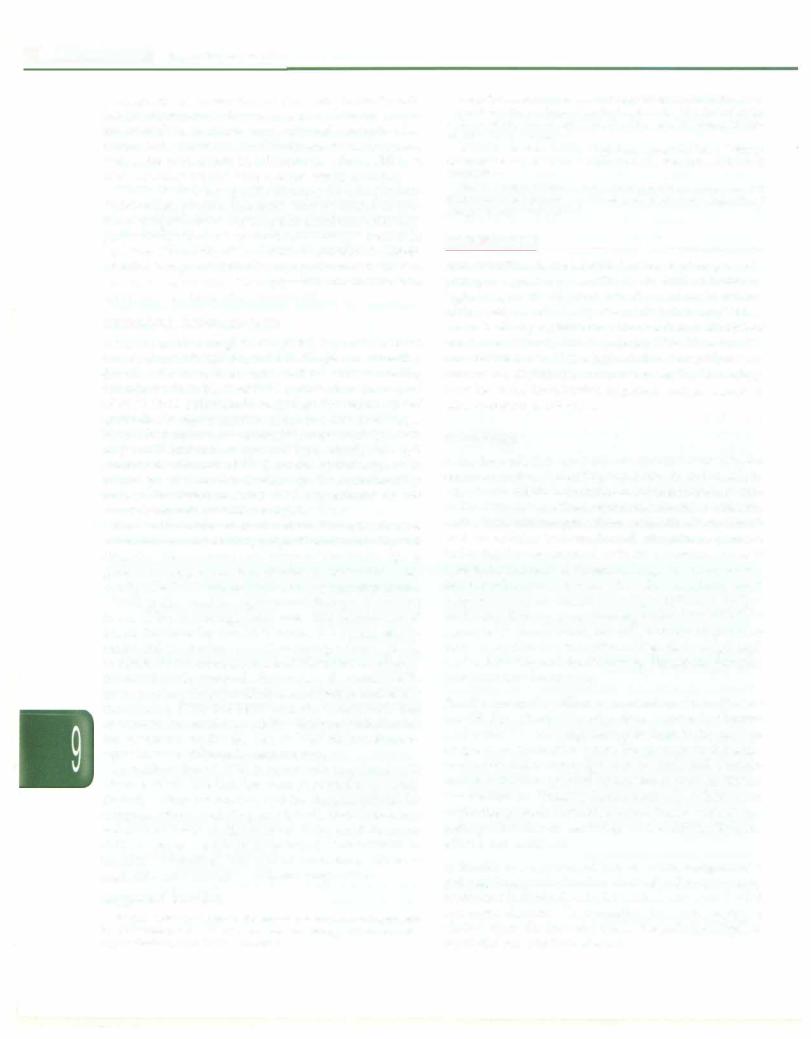
- Essential Pediatrics
Longterm cotrimoxazole and itraconazole prophylaxis has greatly improved the management of chronic granu lomatous disease. Interferon-y, although expensive, has beenusedforthetreatmentoflife-threateninginfectionsas well as for prophylaxis in difficult cases. Some children with CGD may require bone marrow transplantation.
While there is no specific therapy for complement deficiencies, plasma infusions may be useful in life threateningsituations.ForCl esteraseinhibitordeficiency, prophylactic danazol or stanozolol therapy results in significantimprovement.InjectionsofsyntheticCl esterase inhibitor is required if there is laryngealinvolvement with airway compromise. Therapy with adrenaline and hydrocortisone is usually of no benefit.
Intravenous lmmunoglobulin
Intravenous immunoglobulin (IVIG) is pooled normal intactpolyspecificIgGderived from theplasma of healthy donors who have been subjected to strict screening procedures. Each batch of IVIG represents a donor pool of 4000-8000 individuals such that the repertoire of antibodies is representative of the population at large. Most IVIG preparationscontain 90% monomericIgG with only small amounts of IgA and IgM. Ideally, the IgG subclass distribution of IVIG should be the same as in normal plasma, but this depends on the manufacturing process. For instance, some IVIG preparations do not contain adequate quantities of IgG3.
IVIG is the treatment of choice for Kawasaki disease, autoimmune demyelinatingpolyradiculoneuropathyand idiopathic thrombocytopenic purpura. The dose is 2g/kg given as a single infusion. However, lower doses are equally effective in idiopathic thrombocytopenic purpura.
IVIG is also used as replacement therapy in various forms of hypogammaglobulinemia. The recommended dose is 0.4-0.6 g/kg every 3-4 weeks. Its use may also be considered in selected cases of severe myasthenia gravis, autoimmuneneutropenia,neonatalalloimmuneand auto immunethrombocytopenia,lupus crisis, dermatomyositis not responding to conventional steroid therapy andcertain vasculitides. IVIG has been used for prophylaxis and treatment of neonatal sepsis in low birthweight babiesbut the results are equivocal. Use of IVIG for treatment of sepsis in older children is controversial.
Administration of IVIG is commonly associated with adverse effects. The infusion must be started very slowly (initially a drop per minute) and the child monitored for allergic reactions, including anaphylaxis. The infusion rate should be slowed or discontinued if the child develops chills or rigors. Longterm risks include transmission of hepatitis C infection. The risk of acute renal failure is negligible with current iso-osmolar preparations.
Suggested Reading
Singh S. Primary immunodeficiency disorders - a clinical approach. In: AP! Textbook of Medicine, 9th edn. Eds. Munjal YP, Sharma SK. Jaypee Brothers, New Delhi, 2012;151-4
Singh S,Paramesh H. Immunodeficiency Disorders. In: Indian Acad emy of Pediatrics Textbook of Pediatrics, 4th. edn. Eds. Parthasarathy A, Agarwal RI<, Choudhury P, Thacker NC, Ugra D. Jaypee Publish ers, New Delhi, 2009;1085-7
Singh S, Bansal A. Transient hypogammaglobulinemia of infancy: twelve years' experience from Northern India. Ped Asthma All Imm 2005;18:77-81
Suri D, Singh S, Rawat A, et al. Clinical profile and genetic basis of Wiskott-Aldrich syndrome at Chandigarh, North India. Asian Pac J Allergy Immunol 2012;30:71-8
IMMUNIZATION
-----------------
Immunization is the administration of all or part of a pathogen or preformed antibodies to elicit an immuno logicalresponsethatprotectsfromdisease.Consideredone of the most cost effectivehealth interventions of all times, immunization programs have enabled the eradication of small pox, elimination of poliomyelitis from several countriesandasignificant declineinincidencesofmeasles, tetanus and diphtheria. Advances in vaccine technology have led to the introduction of potent vaccines against a wide spectrum of infections.
Terminology
Activeimmunity istheprotective response mounted by the immune system following exposure to an infectious organism (asclinicalorsubclinicalinfection)oraftervacci nation with live or killed organism, a toxoid or subunit. Activeimmunity compriseshumoral(antibody-mediated) and/or cellular (cell-mediated) immune responses. Following first exposure, the primary immune response is slowtodevelop (over3-14daysorlonger)and mayormay not be sufficient to counteract the infection. The humoral response involves formation of IgM followed by IgG antibodies. Host response to re-exposure to the infectious agent (or its component), termed secondary response, is fairly rapid, involves induction of high titers of IgG anti bodies,isusuallysufficienttopreventdiseaseandprovides protection for several years.
Passive immunity refers to protection from disease provided by introduction of preformed animal or human antibodies into the body. Examples include the passage of IgG from the mother across the placenta to the fetus, transmissionof secretory IgA in breast milk, andadminis tration of immunoglobulin or antisera to prevent disease (see section on 'Passive Immunization'). While these antibodies provide immediate protection by neutralizing pathogenic toxins or restricting viral multiplication, the effect is not sustained.
A vaccine is composed of one or more antigens of a pathogenicagentwhich,whenadministered toapreviously unexposed individual, will elicit an immune response but not cause disease. The secondary immune response, elicited when the host encounters the pathogen itself, is rapid and protects from disease.
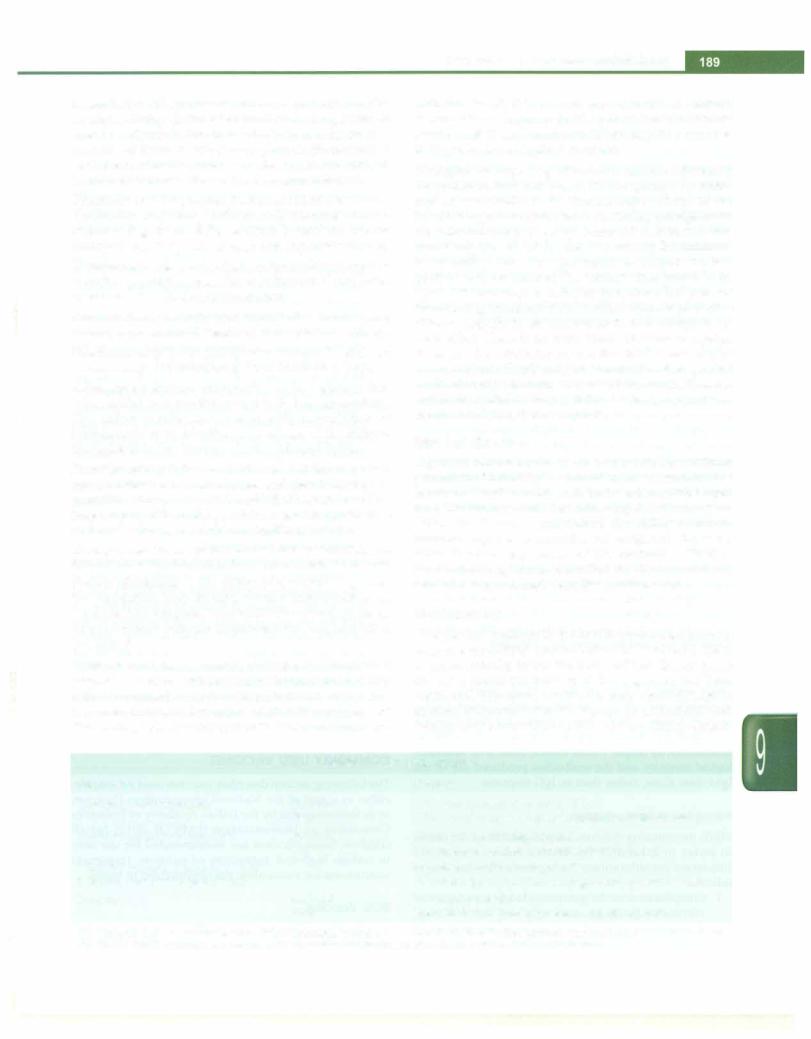
Immunization and Immunodeficiency
Immunization is theprocess of inducingacquiredimmunity, by administering (i) live killed or attenuated organisms or specific antigens (active immunization), usually prior to natural exposure to infectious agent; or (ii) preformed exogenous antibodies,givensoonafterorpriorto exposure, in order to suppress disease (passive immunization).
Vaccination is to the process of administration of a vaccine. Vaccination may elicit predominantly humoral immune response (e.g. Haemophilus influenza b vaccine), cellular immunity(e.g.BCG), orbothresponses(e.g.most vaccines).
Seroconversion refers to the change from antibody negative to antibody positive state, due to induction of antibodies in response to infection or vaccination.
Seroprotection refers to the state of protectionfrom disease, due to thepresence of detectable serum levels of antibody.
Immunogenicity is the ability of a vaccine to elicit an immune response, whether cellular, humoral or both.
Adjuvants are substances unrelated to the organism that, when added to a vaccine, enhance its immunogenicity. The action results from nonspecific stimulation of lymphocytes or by enabling slow release of the antigen. Examples include aluminum hydroxide and lipids.
Protective efficacy is the vaccine's actual ability to protect against disease. Live viral vaccines and toxoids have good protectiveefficacy, while BCG and killedbacterialvaccines may not protect from disease. It is assessed in prospective or retrospective epidemiological studies as follows:
Efficacy= (rate of diseasein unvaccinated persons-rate of disease in the vaccinated) x 100/rate of disease in unvaccinated persons
Vaccine effectiveness is the ability of a vaccine to protect the population from disease, when administered in an immunizationprogram.Vaccineeffectivenessdependson vaccineefficacy,programimplementation and herd effect (see below).
Vaccinefailure is the occurrence of disease in an individual despite vaccination. Primary vaccine failure is the inability of the recommended vaccine dose(s) to induce an immune response, while secondary failure refers to the occurrence of disease despite animmune response. Vaccinefailureis rare
with measles, diphtheria and tetanus vaccines. Primary vaccinefailure may occurdespite 3 doses of oral poliovirus vaccine (OPV) and secondary failure may be seen after BCG, pertussis and typhoid vaccines.
Herd effect. If a large proportion of susceptible individuals are protected from infection with an organism by simul taneous vaccination, the transmission chain of the infectious agent can be broken by reducing carriage of the causative microorganism by vaccinated individuals, thus decreasing the risk of disease even among the unimmu nized individuals. This phenomenon, termed the herd effect, is less pronounced for vaccines that protect only against disease (e.g. diphtheria) than those that prevent infection(e.g.measles,OPV). Vaccineswith lowprotective efficacy (e.g. pertussis and typhoid) have insignificant herd effect. There is no herd effect for vaccines against diseases where humans are not the chief reservoir (e.g. tetanus). Herd effect is utilized as one of the strategies for eradication of poliovirus, andpotentially, during measles epidemics. Herd immunity refers to the proportion of immune individuals in a population.
Types of Vaccines
A good vaccine is one that is easy to administer, induces permanent immunity, is free of toxic substances, has minimalsideeffects and is relatively stableforprolonged time. The timing of administration depends on the age at which the disease is anticipated, the ability to mount immune response to administered antigen(s) and feasi bility. Vaccines may consist of live attenuated, killed or inactivated organisms, modified toxins (toxoids), or subunits. Some examples are listed in Table 9.4.
Live Vaccines
Live vaccines replicate in the host to produce an immune response mimicking natural infection. Therefore, these vaccines actually infect the recipient but do not cause disease because the potency of the organism has been attenuated. However, the vaccine may cause disease in immunocompromised hosts. Rarely, an attenuated viral vaccine may revert to its virulent form causing disease.
|
Table 9.4: Types of vaccines |
|
Description |
|
Example |
Live attenuated organism |
Bacterial |
BCG, oral typhoid (S. typhi Ty21a) |
|
Viral |
OPV, measles, MMR, varicella, rotavirus, yellowfever |
Killed or inactivated organism |
Bacterial |
DTwP, whole cell killed typhoid |
|
Viral |
IPV, rabies, hepatitis A, influenza (whole virion) |
Modified bacterial toxins or toxoids |
|
Diphtheria toxoid, tetanus toxoid |
Bacterial capsular polysaccharide |
|
Salmonella typhi (Vi), Hib, meningococcal, pneumococcal |
Subunit |
Bacterial |
Acellular pertussis |
|
Viral |
Recombinant hepatitis B, influenza (split subunit) |
BCG Bacillus Calrnette Guerin vaccine; DTwP diphtheria toxoid, tetanus toxoid, whole cell killed pertussis vaccine; Hib Haemophilus influenza type b; IPV inactivated poliovirus vaccine; MMR measles mumps and rubella vaccine; OPV oral poliovirus vaccine

- Essential Pediatrics
Storage and transportation conditions are critical to maintaining the potency of live vaccines.
Usually a single dose of live vaccines is sufficient to induce immunity; OPV is an exception where multiple doses may be required to infect the intestinal mucosa. Residual maternal antibody in the infant's serum may neutralize the organism before infection occurs, thus interrupting the 'take' of a vaccine; hence, vaccines like measles and measles, mumps, rubella (MMR) are administered beyond 9 months of age. BCG and OPV are exceptions where maternally derived antibodies do not interfere with vaccine 'take'. This is becauseBCG induces cell mediated immunity that is not transferred from mother to fetus, and OPV infects the gut mucosa which is not interrupted by residual maternal antibody.
Killed Vaccines
Killed vaccines, prepared by growing bacteria or viruses in media followed by heat or chemical (e.g. formalin) inactivation, do not cause infection but elicit protective immune response. Interference by maternal antibodies is less significant. However, multiple doses are required since the organism cannot replicate in the vaccinee. The immunity is not permanent; booster doses are necessary to ensure prolonged protection. Most killed bacterial and some killed viral vaccines (e.g. influenza) are associated with significant local and systemic reactions. These vaccines are relatively heat stable.
Toxoids
Toxoids are modified toxins that, if well purified, are not injuriousto therecipient.Primaryimmunizationis in form of multiple divided doses in order to decrease the adverse effects at each administration and to elicit high antibody titres with repeated exposure to the same antigen. Booster doses are required to sustain the protection.
Subunit Vaccines
Other nonreplicating antigens include capsular poly saccharide and viral or bacterial subunits. Capsular poly saccharides are carbohydrate antigens that elicit humoral response by stimulating B cells directly, without modulation by helper T cells. Hence, there isno immuno logical memory and the antibodies produced are of the IgM class alone, rather than an IgG response.
Principles of Immunization
While immunizing children, certain guidelines are useful in order to maximize the benefit from vaccination. Important considerations during immunization are as follows:
i.Compliancewiththerecommendeddoseandrouteof vaccination limits adverse events andloss of efficacy.
ii.A minimum interval of 4 weeks is recommended between the administrations of two live vaccines, if
not administered simultaneously. Exceptions are OPV and MMR and OPV and oral typhoid (Ty21a), where administration of one before or after another is permitted if necessary.
iii.Killed antigens may be administered simultaneously or at any interval between the doses. However, a minimum interval of 4 weeks between doses of DPT enhances immune responses. A gap of 3-4 weeks is recommended between two doses of cholera or yel low fever vaccine.
iv.There is no minimum recommended time interval between two types of vaccines. A live and an inacti vated viral vaccine can be administered simulta neously at two different sites.
v.A delay or lapse in the administration of a vaccine does not require the whole schedule to be repeated; the missed dose can be administered to resume the course at the point it was interrupted.
vi.Mixing of vaccines in the same syringe is not recom mended, unless approved by the manufacturer.
vii.The following are not contraindications to immuni zation: minor illnesses (e.g. upper respiratory tract infection and diarrhea, mild fever), prematurity, history of allergies, malnutrition, recent exposure to infection and current therapy with antibiotics.
viii.Live vaccines are contraindicated in children with inherited or acquired immunodeficiency and during therapy with immunosuppressive drugs. Live viral vaccines may be given after short courses (less than
2 weeks) of low dose steroids.
ix.Immunoglobulinsinterferewiththeimmuneresponse to certain live vaccines like measles or MMR. If immunoglobulins are administered within 14daysof the vaccine, vaccination should be repeated after 3--6 months. Immunoglobulins do not interfere with the immune response to OPV, yellow fever or oral typ hoidvaccines. HepatitisB,tetanusandrabiesvaccine ortoxoidmaybeadministeredconcurrentlywiththeir corresponding immunoglobulin.
x.Active immunization is recommended following exposure to rabies, measles, varicella, tetanus and hepatitis B.
COMMONLY USED VACCINES
The following section describes vaccines used commonly, either as a part of the National Immunization Program, or as recommended by the Indian Academy of Pediatrics Committee on Immunization (IAPCOI, 2012) for all children. Some vaccines are recommended for use only in certain high-risk categories of patients. Important instructions for vaccination are summarized in Boxes.
BCG Vaccine
The Bacillus Calrnette Guerin (BCG) vaccine is a live attenuatedvaccine that protects against tuberculosis. The
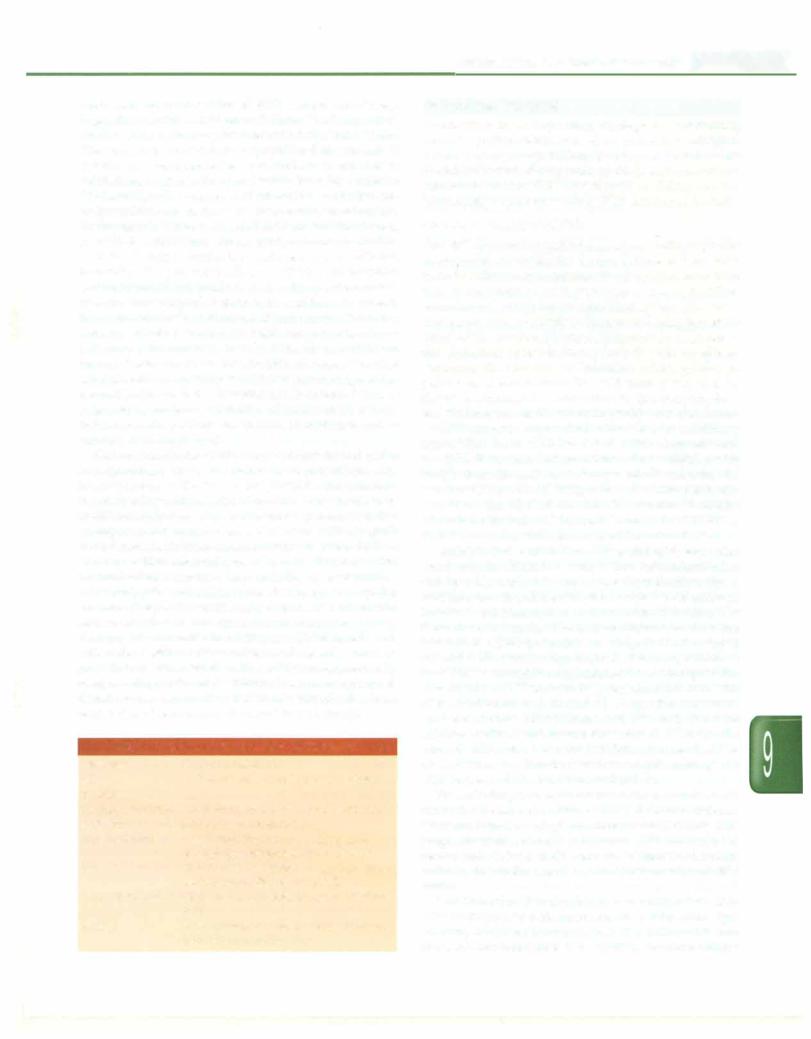
most common used strains of BCG bacteria are Copen hagen (Danish 1331), Pasteur and Glaxo. The Danish 1331 strain used in Indiawas produced atGuindy, TamilNadu. The vaccine is available as a lyophilized (freeze dried) powder in a vacuum-sealed dark multidose vial that is reconstituted with sterile normalsaline.Each dose contains 0.1-0.4 million live viable bacilli. Since the vaccine is extre mely sensitive to heat, the cold chain should bemaintained during transit. While the lyophilized form is stable for one yearat 2--8°C,thepotencydropsrapidlyuponreconstitution.
BCG vaccine primarily induces cell mediated immunity. The protective efficacy of BCG vaccine against severe forms of tuberculosis (e.g. miliary tuberculosis, tubercularmeningitis) is about 80%, and the risk of death from tuberculosis is reduced significantly. However, primary infection is not prevented and protection from pulmonary tuberculosis is only 50%. Since childhood tuberculosis accounts for 15-20% of cases, vaccine administration in infancy is useful in preventing serious morbidity. Due to lack of interference in cellular immune response by maternal antibody, administration at birth provides early protection, ensures compliance and is convenient to implement.
Conventionally,theBCGvaccineisadministeredonthe left shoulder at insertion of the deltoid to allow easy identification of the BCG scar (Box 9.1). Intradermal injection using a 26Gneedle raises a wheal of about 5mm. Bacilli multiply to form a small papule by 2-3 weeks that enlarges to 4-8 mm in size at 5-6 weeks. The papule ulceratesandhealsbyscarringat6-12weeks. Mostchildren show a positive tuberculin test if tested 4-12 weeks after immunization. Adverse effects including persistent ulce rationand ipsilateralaxillaryorcervicallymphadenopathy aremore likely withsubcutaneousinjection. Childrenwith severe cellular or combined immunodeficiency may develop disseminated BCG disease. Children who are tuberculin positive havean acceleratedandenhanced res ponsetoBCGadministration.ThisBCGtestwaspreviously used as a diagnostic test for tuberculosis. Although consi dered more sensitive than tuberculin test, the BCG test carries risk of severe ulceration, and is used rarely.
Box 9.1: Bacillus Calmette Guerin (BCG) vaccine
Dose, route |
0.1 ml; intradermal |
Site |
Left upper arm at insertion of deltoid |
Schedule |
|
National Program |
At birth; up to 1 yr if missed (catch up) |
IAP 2012 |
As above; catch up till 5 yr |
Adverse reactions |
Local ulceration or discharging sinus; |
|
axillary lymphadenitis; disseminated |
|
infection, osteomyeltis or scrofuloderma |
|
(in immunodeficient recipient) |
Contraindication |
Cellular immunodeficiency; symptomatic |
|
HIV |
Storage |
2-8°C; sensitive to heat and light; discard |
|
unused vaccine after 4 hr |
Immunization and Immunodeficiency -
Poliomyelitis Vaccines
Vaccination is an important strategy for preventing paralytic poliomyelitis, caused by poliovirus serotypes 1-3, chiefly in young children. Two types of vaccines are availableas trivalent preparations, the live attenuated oral poliovirus vaccine (OPV) developed by Sabin, and the inactivated poliovirus vaccine (IPV), developed by Salk.
Oral Polio Vaccine (OPV)
The OPVcontainslivepoliovirusesattenuatedbyrepeated passage and multiplication during culture in Vero cells. Each dose (twodrops)contains 105-106 mediancell culture infectious doses of each serotype 1, 2 and 3. When administered orally, the vaccine viruses infect the intes tinal mucosa and multiply in the mucosa! cells, termed as 'take' of the vaccine. Mucosal immunity in response to this 'infection' protects from paralytic poliomyeltis by reducing the chances of infection when wild-type poliovirus is encountered: the wild virus is excreted for shorterperiodsand inlowernumbers,thusreducingfeco oral transmissionand interrupting wild virus circulation.
OPV contains magnesium chloride as a stabilizing agent. The vaccine is stable at 4-8°C for 3-4 months and at -20°C for a year, but its potency drops rapidly with temperature fluctuations.Potency is monitored using the vaccine vial monitor (VVM), a heat sensitive patch dis played on the label of the vial. The vaccine should be discarded if the color of the inner square in the VVM is as dark as, or darker than, the color of the outer circle.
Multiple doses of OPV are essential to ensure take, which may be affected by competition for mucosa! infec tion by other enteroviruses, concomitant diarrhea (rapid intestinal transit reduces the time available for mucosa! infection) and interruption in the vaccine cold chain. For these reasons, vaccine take and seroconversion rates are lower in developing countries as compared to developed countries. To decrease the chances of vaccine failure, at least 3 doses should be administered 4-8 weeks apart. For convenience, OPV vaccine is given simultaneous with DTP vaccination at 6, 10 and 14 weeks (Box 9.2). Sero conversion rates after 3 doses of OPV are highest for serotype 2 (90%) and lowest for serotype 3 (70%). The administration of a 'zero' dose at birth enhances the rates of seroconversion. Twoboosterdosesaregivenalongwith DTP boosters at 15-18 months and at 5yr.
Breastfeeding and mild diarrhea are not contraindi cation for the administration of OPV. However, children with inherited or acquired immunodeficiency and pregnant women should not receive OPV. OPV should be avoided in household contacts of immunodeficient patients, due to the risk of feco-oral transmission of OPV strain.
Children below 5yr should receive additional doses of OPV during pulse polio immunization (PPI) campaigns on every National Immunization Day (NID) and sub National Immunization Day (sNID). In communities
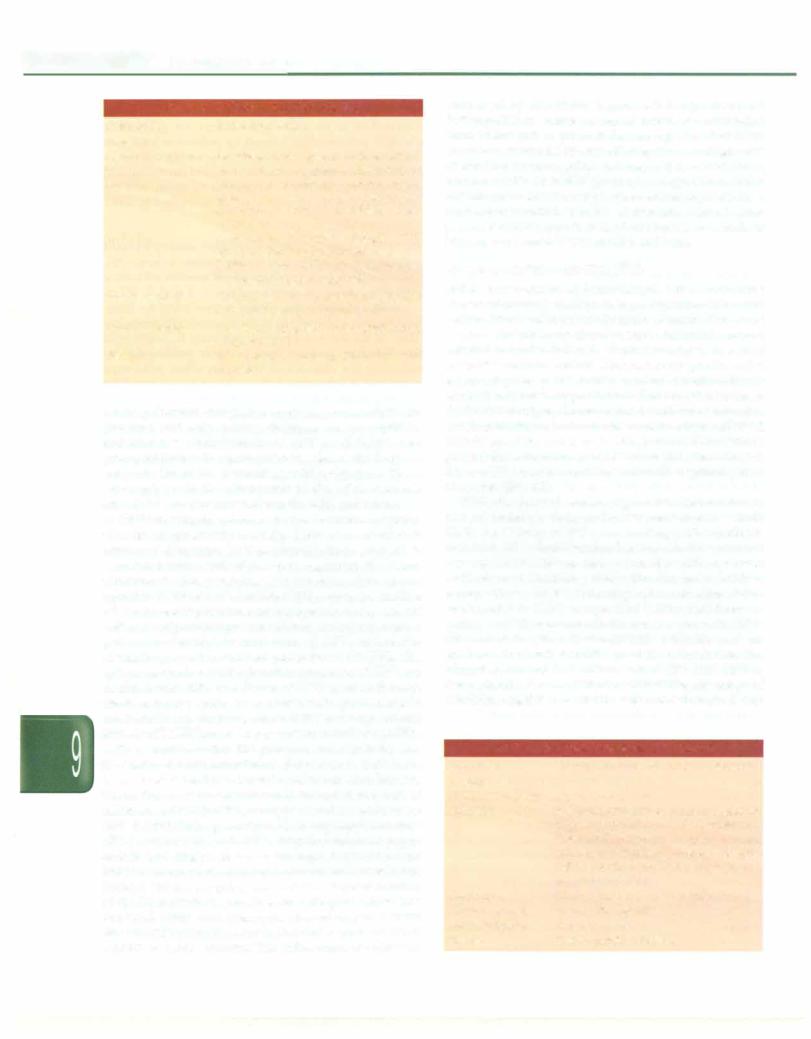
- Essential Pediatrics
Box 9.2: |
Oral poliovirus (OPV) vaccine |
Dose, route |
Two drops; oral |
Schedule |
|
National Program |
Administer one dose at birth or within |
|
15 days (zero dose); three doses at 6, 10 |
|
and 14 weeks (primary) and two doses |
|
at 15-18 mo and 5 yr (boosters); give |
|
additionaldoseson NIDs andSIAs;catch |
|
up till 5 yr |
IAP 2012 |
In sequential IPV-OPV schedule: OPV |
|
given at birth, 6 mo, 9 mo and 5 yr |
|
If IPV not available or not afforded: Give |
|
OPV as in National Program |
Adverse reactions |
Vaccine derived poliovirus; vaccine |
|
associated paralytic poliomyeltis |
Contraindications |
Inherited or acquiredimmunodeficiency; |
|
symptomatic HIV |
Storage |
2-8°C; sensitive to heat; use vaccine vial |
|
monitor |
where poliovirus circulation continues, most adults are immune and only young children are susceptible. Simultaneous administration of OPV to all infants and youngchildren in the community interferes with feco-oral transmission of the circulating wild poliovirus. These interruptions in the circulation of the wild virus are expected to eventually eradicate the wild poliovirus.
OPVis the vaccineof choicefor theeradication of polio virus in countries where wild poliovirus circulation is continued. However, OPV, particularly the serotype 2, is associated with a risk of the virus regaining its neuro virulence to cause vaccine associated paralytic polio myelitis (VAPP)in1of1.5millionOPVrecipients.Another relatively recent phenomenon has been the occurrence of outbreaks of paralytic poliomyelitis by a virulent strain of poliovirus formed by mutation of OPV, called the circulating vaccine derived poliovirus (cVDPV). The epidemiologicalandbiologicalcharacteristicsofcVDPVare similar to the wild virus. Hence, cVDPV spreads through the community rapidly to cause outbreaks, particularly in areaswithlowordecliningrated of OPVcoverage.Atleast 13casesofVPDVhavebeenreportedfromIndiasince2009.
The activities in the PPI program since 1995-96, and the National Polio Surveillance Project since 1997, have been successful in reducing wild poliovirus circulation in India. Some of these measures included the use of monovalent OPV (mOPV, serotypes 1 and 3) and bivalent OPV (bOPV, lacking serotype 2) during supplementary NIDs and mop-up activities, targeting migrant popu lations and high-risk areas through supplementary immunizationactivities (SIAs), environmental surveillance through sewage sampling, and statewise implementation of the Emergency Preparedness and Response Plan. The last wild polio case (serotype 1) was reported from HowrahinJanuary2011, and Indiaisnolonger considered a polio endemic country. The following strategies are
proposed by the India Expert Advisory Group on Poliomyelitis to ensure sustained poliovirus eradication from India and to prevent the emergence of cVPDV:
(i) sustain standard AFP surveillance; (ii)ensurehighrates of routine immunization coverage; (iii) switch from trivalent OPV to bOPV (lacking serotype 2) in 2014; (iv) introduce IPV (booster dose to entire population) in 2013 prior to switch to bOPV to minimize risk of emer gence of cVPDV type 2; and (v) conduct two rounds of NIDs using trivalent OPV in 2013 and 2014.
Inactivated Polio Vaccine (IPV)
IPV is a suspension of formaldehyde killed poliovirus grown in monkey kidney, human diploid or Vero cell culture. The vaccine primarily induces humoral immune response, but pharyngeal andpossibly,intestinalmucosal antibodies are also induced. Vaccine potency is measured by its 'D' antigen content. Each dose of currently used enhanced potency IPV (eIPV) vaccines contain 40D, 8D and 32D units of the types 1, 2 and 3 polioviruses, respec tively. IPV is highly immunogenic, with seroconversion noted in 90-95% infants administered two doses of IPV 2 months apart beyond 8 weeks of age and in 99% of those given 3 doses 4 weeks apart. Hence, vaccination with 2-3 doses of IPV may be combined with DTP beginning at 6- 10 weeks (Box 9.3).
While the titers of secretory IgA antibodies and extent of herd immunity induced by IPV are lower than with OPV, the efficacy of IPV in preventing poliomyelitis is excellent. IPV administration has the advantage of not causing VAPP. Hence, most countries with sustained eradication of circulating wild poliovirus have switched to exclusive use of IPV, following a phase of sequential or combined OPV-IPV usage. The Indian Academy of Pediatrics (IAP) recommends theuse of a 'sequential IPV OPV schedule' (Box 9.3) which shall enable the implem entation of an exclusive IPV schedule in the future. The administration of two doses each of IPV and OPV is seroprotective for over 90% of vaccines. The advantage of administering IPV and OPV in sequence is that the risk of
Box 9.3: Inactivated poliovirus (IPV) vaccine
Dose, route |
0.5 ml; intramuscular or subcutaneous |
Schedule |
|
National Program |
Not recommended |
IAP 2012 |
Sequential IPV-OPV schedule: Administer |
|
3 doses of IPV at 6, 10 and 14 weeks or 2 |
|
doses at 8 and 16 weeks (primary) and |
|
one dose at 15-18 mo (booster); also give |
|
OPV at birth, 6 mo, 9 mo and 5 yr, and |
|
on NIDs and SIAs |
Catch up |
Up to 5 yr; 3 doses at 0, 2 and 6 mo |
Adverse reactions |
Local pain, swelling |
Contraindication |
Known allergy |
Storage |
2-8°C; sensitive to light |
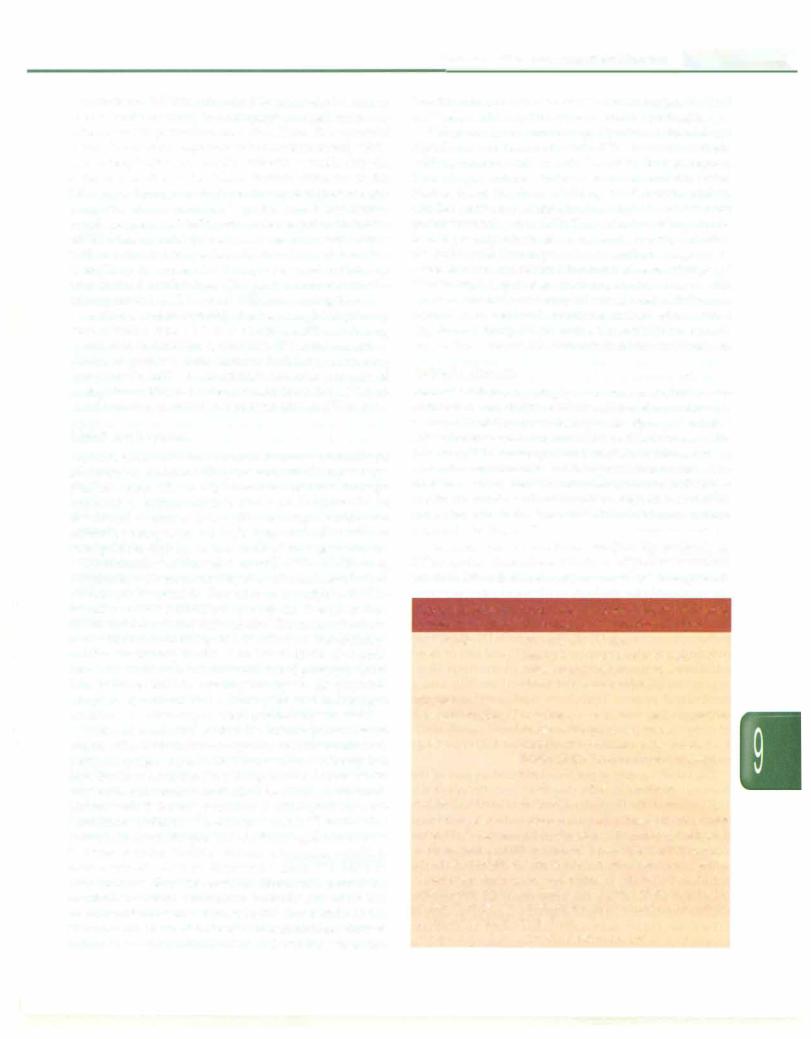
OPV inducedVAPP isminimized by prioradministration of IPV, while ensuring that adequate mucosal immunity interruptswildpolioviruscirculation. Thus, the sequential schedule maintains high rates of mucosal immunity while preventing VAPP. An 'all IPV' schedule would keep the child at a small risk for VAPP through exposure to the OPV virus through contacts or environment before sero protective titres are reached by IPV, and is not recom mendedatpresent.The IAPscheduleretainsthebirthdose of OPV; thisneonataldose isconsiderednecessaryinareas with continued risk of wild poliovirus transmission, and is unlikely to cause VAPP in presence of maternally transmitted antibodies. The IAP recommends the administration of OPV on all NIDs and during SIAs.
A child less than 5-yr-old who has completed primary immunization with OPV may be offered IPV as catch up vaccination in three doses (Box 9.3). IPV is the vaccine of choice in patients with immunodeficiency including symptomatic HN, and in siblings and close contacts of suchpatients. These children shouldnotreceive OPV, and should receive an additional booster dose of IPV at 5 yr.
Diphtheria Vaccine
Diphtheriacontinuesto be a significant cause of childhood morbidity in countries with poor immunization coverage. Natural immunity to diphtheria is acquired through apparent or inapparent infections (see Chapter 10). In developed countries where EPI coverage is high and natural boosting is low, a large proportion of adults are susceptible to diphtheria as a result of waning immunity.
Diphtheria vaccine is a toxoid (DT), containing diphtheria toxin inactivated by formalin and adsorbed on aluminum hydroxide that acts as an adjuvant. The quantity of toxoid contained in a vaccine is expressed as its limit of flocculation (Lf) content. The most commonly used vaccine containing DT is DTwP, a combination vaccine containing 20-30 Lf of DT, 5-25 Lf of tetanus toxoid (TT) and >4 IU of whole cell killed pertussis. Com mon adverse effects, relating chiefly to the pertussis component, include fever, local pain and induration; rarely, incessant crying and encephalopathy are seen.
Maternal antibodies protect the infant against disease and interfere with immune responses to DTP vaccination, particularly againstpertussis.To ensureprotection against diphtheria, vaccination should begin within a few weeks after birth and requires multiple doses. Primary immuni zation with 3 doses given 4-8 weeks apart induces satisfactory antitoxin response to DT and TT in 95-100% infants. However, the protective efficacy against pertussis is lower, at about 70-90%. Immunization does not elimi
nate Corynebacteriurn diphtheriae from the skin or nasopharynx. Booster doses of diphtheria toxoid are required to achieve a protective antibody titer of 0.1 IU/ ml and protect against disease in the first decade of life. Hence, a minimum of 5 doses is recommended; three in infancy (primary immunization) and two booster doses.
Immunization and Immunodeficiency -
Box 9.4 indicates the schedule for administration ofDTwP or DTaP, containing OT, TT and acellular pertussis.
Other vaccines containing diphtheria toxoid are diphtheria and tetanus toxoids (DT) and combinations with reduced toxoid content (Td, TdaP). If given beyond 7 yr of age, primary immunization or booster doses should be in the form of Td or TdaP, which contain smaller amounts of diphtheria toxoid (2 Lf) and acellular pertussis vaccine than DTP. This reduction of diphtheria toxoid potency minimizes reactogenicity at the injection site but is sufficient to provoke an antibody response in older children and adults. To promote immunity against diphtheria, Td, rather than tetanus toxoid alone, should be used when tetanus prophylaxis is needed following injuries. In nonendemic countries, revaccination against diphtheria every 10 yr may be necessary to sustain immunity amongadults, particularly health-care workers.
Pertussis Vaccine
Pertussis (whooping cough) is an important global cause of infectious morbidity, with an estimated annual occur rence of 16 million cases, chiefly in developing countries. Whilethe incidenceof pertussis has declineddramatically following EPI coverage, the infection continues to be endemic even in countries withhighvaccination rates.The disease usually affects infants and unimmunized adole scents; those <6-month-old have the highest case fatality rate. Natural infections and immunization induce immunity lasting 4-12 yr.
Pertussis vaccine has been traditionally available as DTwP as described above. Twotypes of pertussis vaccines are available: whole-cell (wP) vaccines based on killed B.
Box 9.4: Diphtheria toxoid, tetanus toxoid and killed whole cell pertussis (DTwP) or acellular pertussis (DTaP) vaccine
Dose, route |
0.5 ml; intramuscular |
Site |
Anterolateral aspect of mid-thigh (avoid |
|
gluteal region: risk of sciatic nerve |
|
injury; inadequate response) |
Schedule |
|
National Program |
DTwP at 6, 10 and 14 weeks (primary); at |
|
15-18 mo and 5, 10, 16 yr (boosters) |
IAP 2012 |
DTaP or DTwP; primary schedule as |
|
above; Tdap/Td at 10-12 yr; Td every |
|
10 yr |
Catch up :::,.7 yr: |
DTaP or DTwP at 0, 1 and 6 mo |
Catch up >7 yr: |
Tdap at O mo; Td at 1 and 6 mo |
Adverse reactions |
Local pain, swelling, fever (DTwP>DTaP) |
Contraindications: |
(i) Progressive neurological disease |
(administer DT or dT instead); (ii) anaphylaxis after previous dose; (iii) encephalopathy within 7 days of previous dose
Precautions: Previous dose associated with (i) fever >40.5°C within 48 hr; (ii) collapse (hypotonic-hyporesponsive episode) within 48 hr; (iii)persistentinconsolable crying for >3 hr within 48 hr; (iv) seizures within 72 hr
Storage 2-8°C; sensitive to light
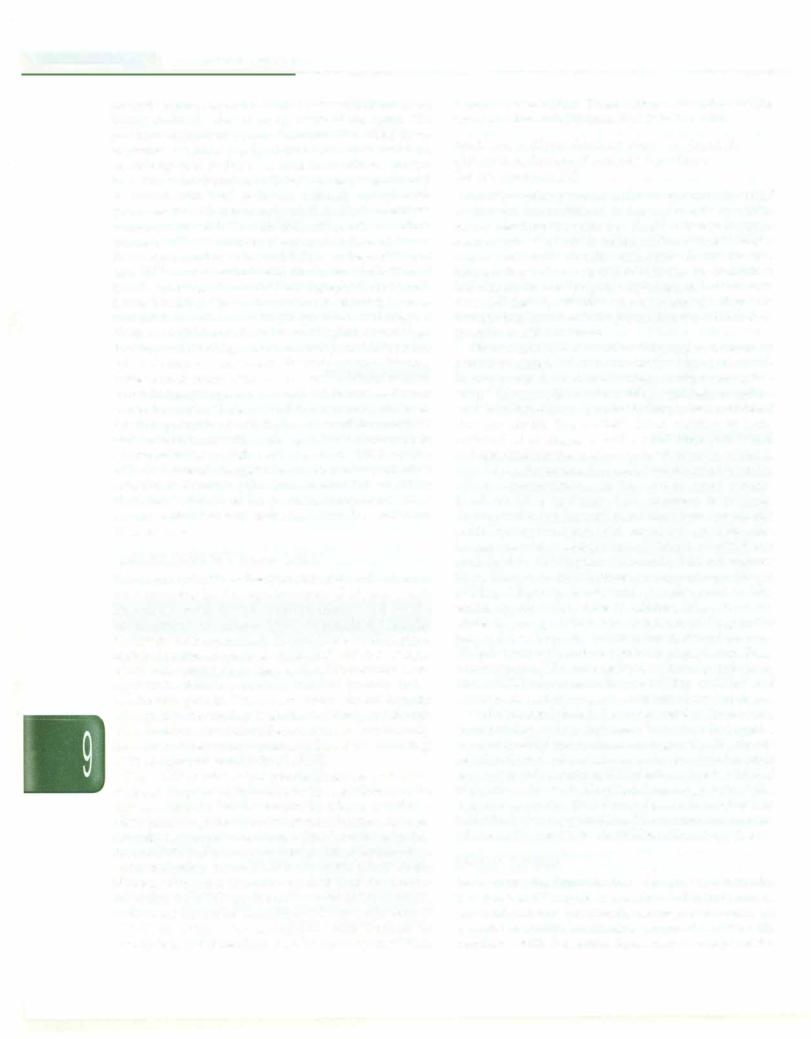
- E-ss_e_n_ tia_l_P_e_d_ i_a _tr_ic_s
_________________________________
pertussis organisms, and acellular (aP) vaccines based on highly purified, selected components of the agent. The protective efficacy of primary immunization with 3 doses of pertussis vaccine is only 70-90% and wanes over 6-12 yr, making booster doses essential for continued protec tion. The administration of DTwP vaccine is commonly associated with local (pain and redness) and systemic (fever)reactions thatare chieflyattributedto the pertussis component (Box 9.4). Theincidenceoftheseadverseeffects increases with the number of doses administered; hence the vaccine is not used beyond 5 doses or beyond 7 yr of age. DTP is also incriminated in the rare induction of seriousneurological complications, though conclusive evi dence is lacking. Hence, the vaccine is relatively contra indicated in children with progressive neurological disease,butchildren with stable neurological diseases (e.g. developmental delay, cerebral palsy and idiopathic epilepsy) may be vaccinated. Absolute contraindications to theadministrationof the vaccine andadditionaladverse events that require precaution are listedin Box 9.4. Parents should be cautioned about the risk of recurrence of events listed in 'precautions' with further doses of the vaccine; if such an event recurs with a subsequent dose, further doses are contraindicated. Individuals in which DTP is contra indicated should complete the immunization schedule with DT, that contains the same doses of DT and TT as DTP, but is devoid of the pertussis component. DT is recommended for use up to the age of 7 yr, beyond which Td must be used.
Acellular Pertussis Vaccine (DTaP)
Thesuspicion that the active pertussis toxin andendotoxin are responsible for the high incidence of adverse events associated with DTwP administration led to the development of various types of purified acellular pertusssis vaccines, or DTaP. Theavailable DTaP vaccines contain inactivated pertussis toxin (PT) and one or more additional pertussis antigens, like filamentous hem agglutinin (FHA), pertactin, fimbrial protein and a nonfimbrial protein. Trials have demonstrated that the efficacy of these vaccines is similar to DTwP, but the risk of systemic and local side effects is reduced significantly. Each dose of the vaccine contains at least 4 IU (10-25 mg) of PT component and 6.7-25 Lf of DT.
The DTaP vaccine is not recommended as part of the National Program in India due to its cost. However, the IAP recommends that the vaccine be offered to children when parents opt for it in view of the advantage of fewer side effects, or arereluctant totheadministrationof further doses of DTwP after an adverse effect with apreviousdose, while endorsing the continued use of the DTwP in the National Program. It must be noted that the contra indication for DTaP are the same as for DTwP; and the vaccine should not be administered if a previous dose of DTwP or DTaP was associated with immediate anaphylaxis,or the development ofencephalopathy within
7 days of vaccination. These children should complete immunization with DT instead of DTwP or DTaP.
Reduced Antigen Acel/ular Pertussis Vaccine (Tdap) and Reduced Antigen Diphtheria Toxoid Vaccine (Td)
Immunity against pertussis induced by natural infection or through immunization in infancy wanes by adole scence, resulting in a second peak of the disease in adole scence. Pertussis controlis unlikely to be achievedif adole scents and adults remain susceptible to the disease, because they act as a source of infection to susceptible individuals. Immunityagainst diphtheria also waneswith time and the only effective way to control the disease is throughimmunizationthroughoutlife to provideconstant protective antitoxin levels.
The availability of Tdap offers the prospect of reducing pertussis incidence in the community. The rationale for its use is that the reduced antigen content causes less severe adverse effects while being sufficient to induce protectiveresponsein apreviouslyimmunizedindividual (booster effect). The available Tdap vaccines in India contain 5 Lf of tetanus toxoid, 2 Lf of diphtheria toxoid andthreeacellularpertussiscomponents namely, pertussis toxoid 8 µg, filamentoushemagglutinin 8 µg andpertactin 2.5 µg. Contraindications to Tdap are the same as those listed for DTaP or DTwP. Unimmunized individuals shouldreceive onedose of Tdap if olderthan 7 years; this is followed by two doses of Td vaccine at 1 and 6 months. In some countries, a single dose of Tdap is administered to allchildrenat10-12years,followedby Tdboostersevery 10 yr. There is no data at present to support repeat doses of Tdap. Tdap may also be used as replacement for Td/ tetanus toxoid (TT) booster in children above 10 yr and adults of any age if they have not received Tdap in the past and 5 yr have elapsed since the receipt of previous TT/Td vaccine. If less than 5 yr have elapsed since Tdap administration,TT is not required for wound prophylaxis. The IAPCOI recommends the use of Tdap or DTwP and not Tdap, as second booster in children below 7 yr of age.
While standard dose DT is recommended for primary immunization against diphtheria because of its superior immunogenicity and minimal reactogenicity, the reacto genicity of the vaccine increases with age. Since the adult preparation Td, containing 5 Lf of tetanus toxoid and 2 Lf of diphtheriatoxoid, is adequately immunogenic in adults, it is recommended for booster doses administered to individuals 7 yr of age or older. The vaccine may be used whenever TT is indicated in children above 7 yr of age.
Tetanus Vaccine
Extensive routine immunization of pregnant women with two doses of TT has led to a decline in the incidence of neonatal tetanus, previously an important cause of neonatal mortality. Immunizing pregnant women with two doses, with the second dose administered at least 2
